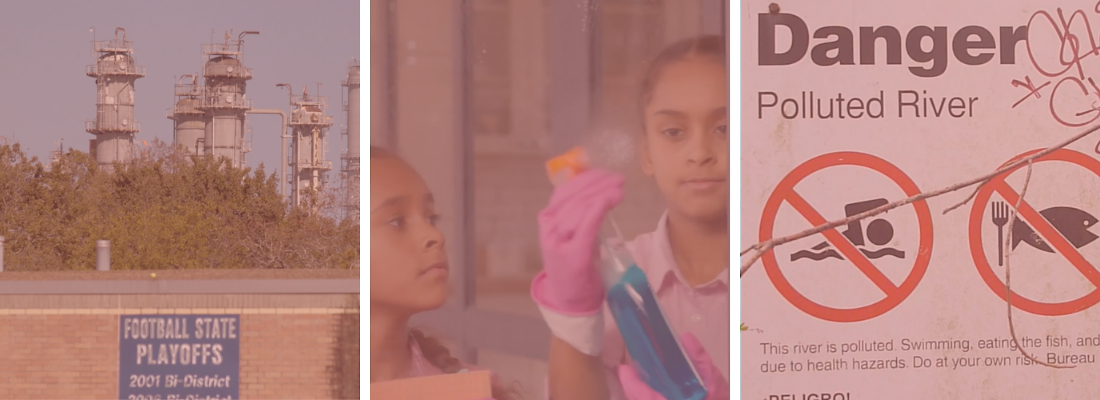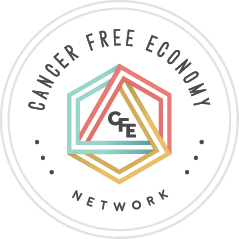Unacceptable Risk
Dr. Margaret Kripke on Cancer and the Environment
Unacceptable Risk: Dr. Margaret Kripke on Cancer and the Environment, a film by Cynthia McKeown
About the Video
Unacceptable Risk: Dr. Margaret Kripke on Cancer and the Environment, tells the story of a prominent cancer researcher who began to rethink her assumptions about the causes of cancer and the true burden of environmentally-induced cancers.
Please comment and share this video to help us get this important and timely perspective out to a wider audience. View the press release here.
Post
Tweet
Share
It’s difficult to find a more preeminent figure in the world of cancer research than Dr. Margaret Kripke. A world-renowned expert in the immunology of skin cancers, she holds a doctorate from the University of California, Berkeley. While conducting research at the National Cancer Institute, she was recruited to the top-ranked MD Anderson Cancer Center in Houston, Texas, to head a new department of immunology. She became the first female department chair, as well as the first female full professor in basic science, in the history of the institution.
Dr. Kripke served on the President’s Cancer Panel from 2003 until 2010. It was during that time that the Panel decided to examine the impact of environmental factors on cancer risk. Dr. Kripke learned that of the 80,000+ chemicals on the market in the United States, most are largely unstudied or understudied, and most are unregulated. She realized that exposure to cancer causing chemicals and environmental carcinogens are a widespread and daily occurrence for millions of people in the U.S., and that most people still don’t know this.
Like any good scientist presented with new data, Dr. Kripke reconsidered her hypothesis. Her experience on the President’s Cancer Panel was a turning point in her understanding of the multifactorial causes of cancer, including the impact of exposure to toxic chemicals. This has led to a new path in her long and illustrious career. With cancer being the second leading cause of death in the U.S., she has become a strong advocate for cancer prevention and challenges the cancer research and clinical communities to look more closely at environmental and chemical contributions to cancer.
Known and suspected carcinogens in the places we live, learn, work and play are an unacceptable risk. We can do more to prevent cancer.
Act Today to Address this Unacceptable Risk

- View and share the documentary film Unacceptable Risk (with English and Spanish subtitles available) and other videos about taking action to prevent cancer here.
- Read and share A Path to Cancer Prevention and Environmental Equity: The Cancer Free Economy Network’s Agenda for the Biden-Harris Administration and contact your representatives about our latest action alerts.
- Support our efforts to prevent childhood cancer by downloading the Childhood Cancer: Cross-Sector Strategies for Prevention report and signing the public statement of support here.
- Sign up for CFE’s Advocacy Action list here to receive periodic emails with opportunities to take action.
- Make a donation to help us develop more impactful videos, reports and advocacy to reduce everyone’s exposure to cancer-causing chemicals.
Those Who Face the Extra Risk and Burden of Cancer
While exposures to toxic chemicals – in the air we breathe, the water we drink, the food we eat, and the everyday products we use – affect all of us, these toxic exposures disproportionately affect low-income individuals and people of color where they live and work.

- Recent studies have shown that people of color, recent immigrants, and people in low income communities are far more likely to work with industrial agents that increase cancer risk, have less access to institutions that protect them, and suffer disproportionately from exposures to environmental contaminants linked with cancer.[i]
- Levels of indoor pollutants—lead, allergens, and volatile organic compounds (VOCs)—tend to be elevated in low-socioeconomic status households.[ii]
- Indigenous, Black, and Latinx people, as well as recent immigrants and people with lower incomes are exposed to more hazardous chemicals in outdoor air compared with white affluent neighborhoods,[iii] as low income communities tend to be clustered around industrial sites, truck routes, ports and other air pollution hotspots.
- African Americans are exposed to 38 percent more polluted air than whites, and they are 75 percent more likely to live in fence-line communities than the average American.[iv]
- For many low-income families, dollar stores are their only source of household necessities, including food, children’s toys, and clothing. However, dollar stores sell products with high levels of toxic chemicals, posing a significant threat to the most vulnerable populations.[v]
[i]https://www.uml.edu/docs/Fact%20Sheet%20Industrial%20Carcinogens_tcm18-229896.pdf
[ii] Adamkiewicz et al. 2011. Am J Public Health December; 101(Suppl 1): S238–S245.
[iii] Bell, M.L. and K. Ebisu. 2012. Environ Health Perspect. 120(12): 1699-704.
[iv]“Fumes Across the Fenceline. The Health Impacts of Air Pollution from oil & Gas Facilities on African American Communities.” Report by NAACP and Clean Air Task Force. November 2017. http://catf.us/resources/publications/files/FumesAcrossTheFenceLine.pdf
[v]http://www.ecocenter.org/healthy-stuff/reports/dollar-store-report#

